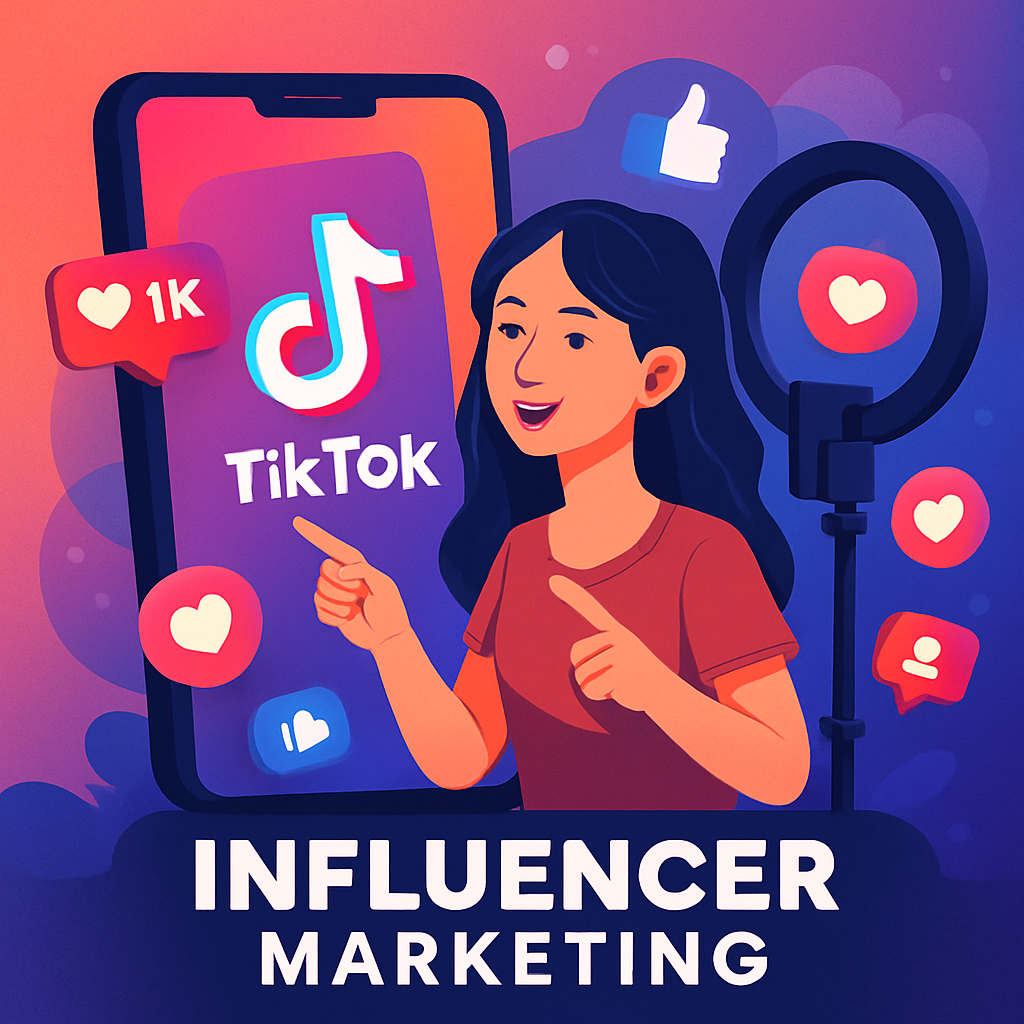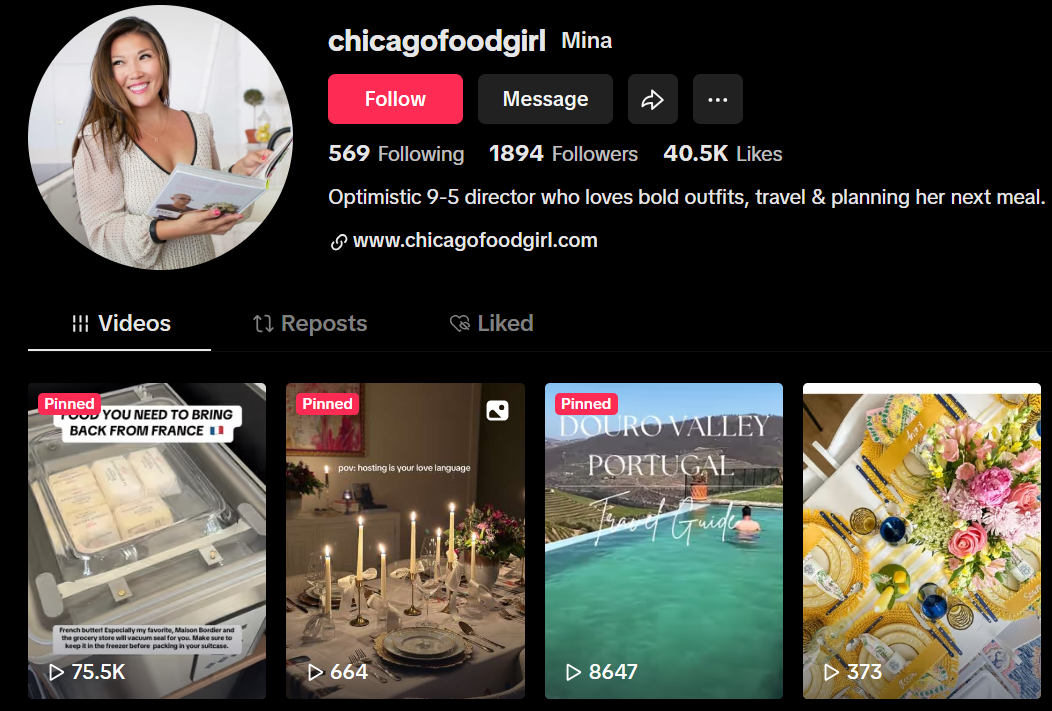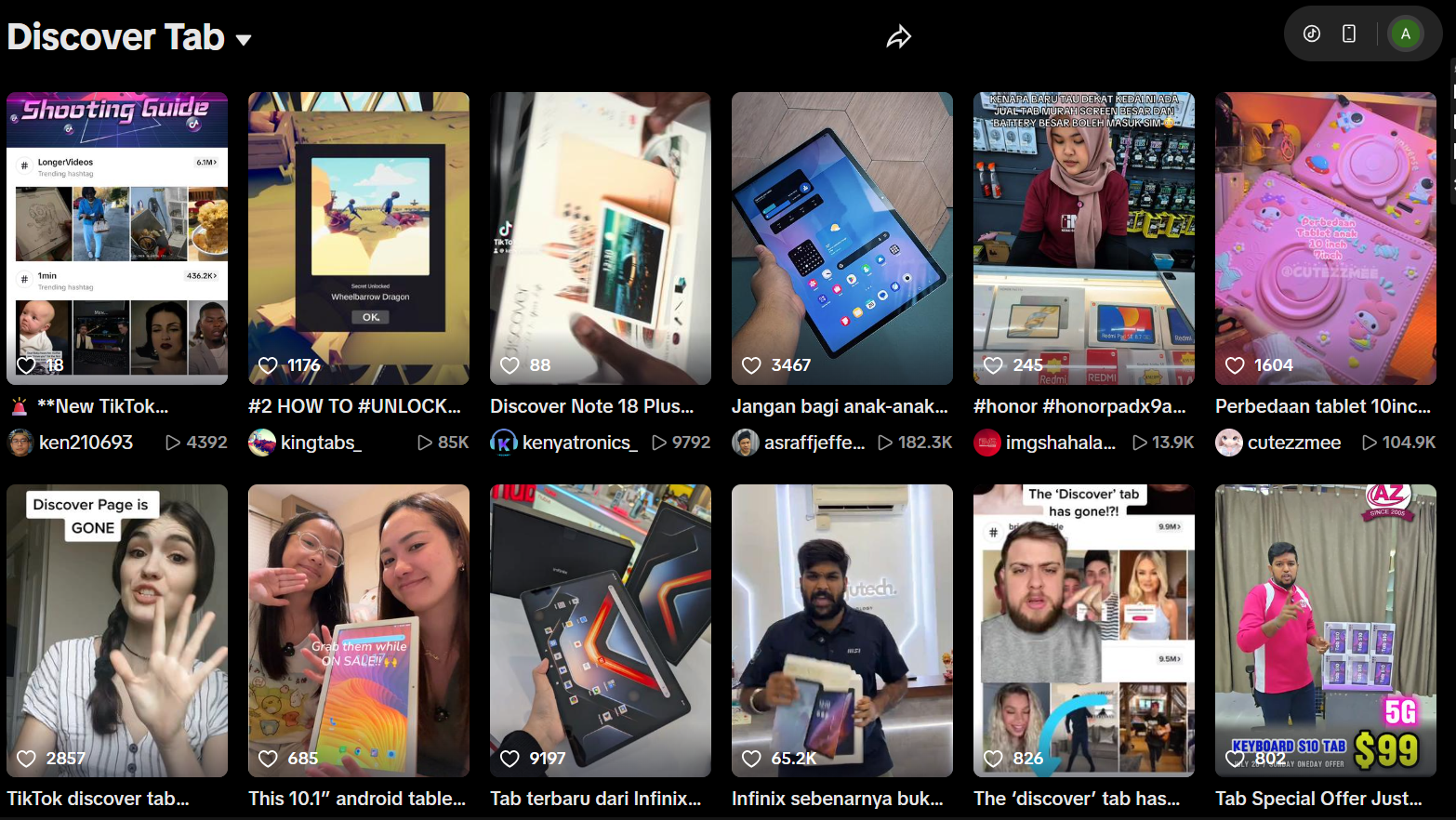TikTok influencer marketing has quickly become an important strategy for brands wanting to reach younger audiences and boost their presence online. Millions of people scroll through TikTok every day, and influencers have strong connections with their followers. Working with TikTok influencers allows brands to promote products and ideas in a way that feels real and relatable.
Brands of all sizes are using TikTok influencer marketing to build awareness, increase engagement, and drive sales. Influencers can make creative content that fits with a brand’s style while reaching people who may not see ads anywhere else. This approach helps brands stand out in a fast-moving digital world.
As TikTok keeps growing, influencer marketing on the platform offers new ways for companies to connect with potential customers. Learning how it works can help brands get noticed and build loyal communities online.
Understanding TikTok Influencer Marketing
TikTok influencer marketing uses the creativity and reach of TikTok creators to help brands increase awareness, trust, and connection with their target audience. By working closely with influencers, brands can create authentic short-form videos that feel relatable and drive high engagement.
What Sets TikTok Influencer Marketing Apart
TikTok influencer marketing relies on creators who know how to make content that feels casual and genuine. Unlike traditional ads, these videos use trends, music, and humor to connect with viewers quickly.
The TikTok platform is built for short, fast-paced videos, often between 15 and 60 seconds. Influencers build trust with their followers by sharing personal stories, tutorials, or challenges featuring brands in ways that blend with their usual style.
TikTok’s algorithm pushes popular or engaging videos to wider audiences, often beyond the creator’s followers. This gives influencer campaigns more chances to go viral and reach new users.
Types of TikTok Influencers
TikTok influencers come in different sizes and styles, making it possible for brands to choose the right fit based on their goals. They usually fall into categories like:
| Influencer Type | Follower Count |
|---|---|
| Nano influencers | 1,000 – 10,000 |
| Micro influencers | 10,000 – 100,000 |
| Macro influencers | 100,000 – 1,000,000 |
| Mega influencers | Over 1,000,000 |
Nano and micro influencers often have highly engaged communities and may offer better authenticity. Macro and mega influencers bring large audiences but may have lower engagement per follower.
Creators focus on different niches, such as beauty, fashion, gaming, food, or fitness. Brands can find creators whose followers match their own target audience.
Audience Demographics and Engagement
TikTok has a broad and energetic user base. Most users are between 16 and 34 years old, with Gen Z making up the largest group.
Engagement rates on TikTok are often higher than on other social platforms. Users spend a lot of time watching, commenting, and sharing content. They are drawn to authentic and creative videos.
Brands looking for influencer marketing on TikTok should focus on finding creators whose audience matches their own. TikTok’s global reach also makes it helpful for brands hoping to reach customers in different countries or regions.
Key Benefits for Brands
TikTok influencer marketing helps brands build strong brand awareness and reach. Working with the right creators can allow brands to be part of viral trends and conversations.
Key benefits include:
- Increased visibility in a short time
- High influencer engagement, which can lead to more brand authenticity
- Reaching new audiences who may not see traditional ads
- The ability to measure success with clear metrics like views, likes, comments, and shares
Brands can use influencer partnerships for product launches, special campaigns, or ongoing promotions, all while keeping content relatable and easy to share.
Essential TikTok Influencer Marketing Strategies
A thoughtful TikTok influencer marketing strategy relies on setting clear objectives, selecting appropriate influencer partners, and building strong content collaborations. Brands benefit most when they take a focused approach to influencer partnerships across every step.
Defining Campaign Goals and KPIs
Setting clear campaign goals helps brands measure success and stay on track. Companies should use the SMART framework (Specific, Measurable, Achievable, Relevant, Time-bound) to set practical objectives. Common goals include brand awareness, engagement rates, clicks to website, or sales conversions.
Clear KPIs allow teams to track progress. Typical KPIs include:
- Number of video views
- Follower growth
- Click-through rates
- Hashtag usage
- Sales or downloads
Brands should match goals with their business needs. For example, a new brand might focus on reach and followers, while an established business could target sales. Well-defined goals help brands compare influencer partners and guide campaign adjustments.
Selecting the Right Influencers
Choosing the right TikTok influencer is key to campaign success. Brands should consider influencer type ; nano-influencers (1k–10k followers), micro-influencers (10k–100k), or macro-influencers (100k–1M+). Nano and micro-influencers often see higher engagement in niche markets, while macro-influencers offer broader reach.
When starting influencer discovery, brands should evaluate:
- Audience demographics
- Content style and tone
- Engagement rate
- Authenticity and brand fit
Partnering with TikTok influencers who share similar values and attract the target audience increases campaign credibility and ROI. Brands often use influencer discovery platforms or manual searches to identify suitable influencer partners.
Top Micro-Influencers (10K–100K followers)
-
Adam Schwartz (@adamschwartzfood) – Food & Recipe Creator (71.5K followers)
Specializes in fun, engaging culinary videos ideal for food and kitchenware brands. https://www.tiktok.com/@adamschwartzfood -
Mina Im (@chicagofoodgirl) – Food & Travel (77.6K followers)
Showcases city food tours and lifestyle content a perfect fit for restaurant and grocery brands https://www.tiktok.com/@chicagofoodgirl -
Catherine Pla (@chouquettekitchen) – Baking & French Cuisine (69.3K followers)
A pastry chef and Amazon affiliate who demonstrates detailed gourmet cooking. https://www.tiktok.com/@chouquettekitchen
Top Nano-Influencers (1K–10K followers)
-
@nydrvgchxi – Lifestyle/Creative (7.5K followers, 48% engagement)
High engagement makes them excellent for targeted, high-performance campaigns. https://www.tiktok.com/@nydrvgchxi -
@abtyhviejf – Niche Sports Content (1.3K followers, 4% engagement)
Perfect for micro-campaigns in sports and athletic niches, with strong follower interaction.https://www.tiktok.com/@abtyhviejf
Crafting Effective Content Collaborations
Strong influencer collaboration is built on clear communication and creative freedom. Successful influencer partnerships work best when brands provide clear goals and guidelines but allow influencers flexibility in content creation.
Effective content collaboration may involve:
- Co-developing video concepts
- Using branded hashtags
- Incorporating product placements naturally
- Encouraging user-generated content from followers
Brands benefit from sharing best practices and timely feedback. Regular check-ins keep influencer partners informed of expectations. Brands should also respect creative input from TikTok micro-influencers and others, as authentic content performs better on the platform.
Discover videos related to St Thomas Captions for Instagram in English on TikTok
Key TikTok Influencer Marketing Stats
Influencer Cost by Tier (2025 Average Rates):
| Tier | Followers | Avg. Cost per Post (USD) | Typical Engagement Rate |
|---|---|---|---|
| Nano | 1,000 – 10,000 | $25 – $250 | 8% – 15% |
| Micro | 10,000 – 100,000 | $150 – $1,000 | 7% – 12% |
| Mid-tier | 100,000 – 500,000 | $1,000 – $4,000 | 5% – 10% |
| Macro | 500K – 1M+ | $4,000 – $20,000+ | 3% – 7% |
Source: HypeAuditor, InfluencerMarketingHub
Reach & Engagement Insights:
-
Nano & Micro influencers drive up to 60% higher engagement rates than macro influencers.
-
41% of TikTok users say they discover new products through influencer content (TikTok Marketing Science Report, 2025).
-
TikTok UGC (User Generated Content) sponsored by influencers is shared 4x more than branded ads.
-
82% of brands say nano and micro-influencers deliver better ROI than bigger creators on TikTok.
-
The average video reach for a nano-influencer post is 8,000–40,000 views; for a micro-influencer, it’s 20,000–250,000+ views per campaign.
Campaign Execution and Optimization
Effective TikTok influencer campaigns require careful planning, creative content, and tracking detailed results. Brands need to understand how to launch, manage, and refine campaigns using real data and platform features.
Launching and Managing TikTok Campaigns
Launching a TikTok influencer campaign begins with setting clear campaign objectives. Goals can include brand awareness, product sales, or driving app installs. Brands then select influencers based on follower demographics and content style.
Planning includes agreeing on deliverables, such as video count, posting schedule, and calls to action. Communication is key—brands and creators align on messaging and campaign guidelines without limiting creativity. A basic project plan may look like this:
| Step | Action |
|---|---|
| Define goal | Awareness, sales, or traffic |
| Select influencers | Fit, reach, and engagement |
| Set deliverables | Video posts, hashtags, timing |
| Review content | Approve before posting |
During the campaign, brands monitor progress, respond to changes, and provide feedback if needed. They encourage flexibility so influencers can react to trends and audience responses in real time.
Leveraging Viral Content and Trends
Viral content and trending topics drive most of TikTok’s reach. Campaigns achieve better results when influencers create content that fits current TikTok trends, such as specific challenges, hashtags, or popular audio.
Brands should watch TikTok’s Discover page and trending hashtags to spot themes gaining traction.
User-generated content is a strong driver; encouraging fans to make their own posts can amplify results. Campaigns often see more engagement when influencers participate in or start trends instead of pushing scripted ads.
Simple, authentic content works best. Brands often provide inspiration or guidelines but let influencers use humor, storytelling, or quick editing styles popular on TikTok. Timing is also important posting when a trend peaks maximizes exposure.
Measuring Performance and Analytics
Tracking performance is essential to know if a TikTok campaign succeeds. Key metrics include views, likes, shares, comments, and hashtag use. TikTok Analytics provides real-time data, letting brands measure results quickly.
Some campaigns use promo codes, links, or TikTok Shop to track direct sales or conversions. Engagement rates show how well influencer content resonates with followers. Reviewing completion rates and watch time reveals which videos hold viewer interest.
To optimize future campaigns, brands compare results against objectives and industry standards. They experiment with content types, posting times, and new features, using data to improve influencer selection and campaign structure for better results next time.
TikTok Features, Tools, and Platforms for Influencer Marketing
Brands and influencers use several TikTok features and platforms to plan, track, and improve their marketing efforts. The right tools help match brands with creators, create interactive content, analyze performance, and manage campaigns more easily.
Utilizing TikTok Creator Marketplace
The TikTok Creator Marketplace is the platform’s official tool for connecting brands with influencers. Companies can browse thousands of creators, filter by audience size, location, engagement rates, and content categories. This makes it easier to find influencers that fit a campaign’s target audience.
Brands can view important stats such as follower growth, recent engagement, and audience demographics. The marketplace also allows direct messaging for collaboration and campaign setup. All transactions and contracts can be managed within the platform, helping brands and creators stay organized.
For those expanding e-commerce, TikTok Shop can be integrated into campaigns through the Creator Marketplace, enabling direct product links in influencer content.
Branded Effects and TikTok Ads
Branded Effects let companies create custom stickers, filters, or augmented reality (AR) experiences. Influencers can use these branded visuals in their videos, making campaigns interactive and memorable for viewers.
TikTok Ads provide another way to boost influencer content. Options like In-Feed Ads, TopView, and Branded Hashtag Challenges can be combined with influencer marketing. This paid promotion increases reach, targets specific groups, and gathers insights for future campaigns.
Branded effects and ads often work best when paired with authentic influencer videos. They hook users visually while letting the influencer’s style and message come through.
Influencer Marketing Platforms and Tools
Beyond TikTok’s own tools, brands often use third-party influencer marketing platforms. Tools like Upfluence and Modash offer advanced search filters, performance analytics, and campaign management features. These platforms help brands find suitable TikTok creators by filtering through audience demographics, engagement history, and past sponsored content.
Platforms often include reporting dashboards, allowing brands to track sales, clicks, or app downloads linked to influencer campaigns. Some even let brands manage payouts and legal agreements in one place.
Besides analytics, these platforms may help with discovering trends, comparing multiple influencers, and optimizing budgets across TikTok advertising and influencer collaborations. This drives better planning and transparency for every campaign.
Successful TikTok Influencer Marketing Examples
TikTok influencer marketing uses creative content and influencer partnerships to drive engagement and brand awareness. Brands often work with popular content creators to reach younger audiences and create viral campaigns.
Case Studies of Effective Campaigns
Several well-known brands have run successful TikTok influencer marketing campaigns. Chipotle partnered with creator David Dobrik for the #ChipotleLidFlip challenge, which quickly became viral. The campaign encouraged users to try flipping Chipotle bowl lids in creative ways, leading to millions of user-generated videos.
Ralph Lauren used the US Open tennis tournament to launch a challenge with content creator Diana Silvers. The hashtag #WinningRL showcased moments of victory, tying the brand to sports and style. This campaign drove high engagement and increased brand visibility among younger users.
Walmart collaborated with multiple TikTok influencers to highlight back-to-school deals. Content creators made short, fun videos featuring their favorite products, which helped Walmart reach students and parents alike.
Lessons from Leading Brands
Successful TikTok influencer marketing examples reveal a few important strategies. Brands that give influencers creative freedom often see more authentic and relatable content. This approach builds trust and lets creators connect with their followers in a genuine way.
Clear goals for each campaign matter. For example, Chipotle and Ralph Lauren used easy-to-join challenges, which encouraged user participation. Simple hashtags and interactive trends make it easy for users to join in and spread the brand’s message.
Brands also tend to choose content creators who reflect their values and target audience. By selecting influencers whose followers match their customer base, brands can maximize reach and engagement. Testing different campaign formats, such as challenges or product showcases, also helps brands identify what works best on TikTok.








